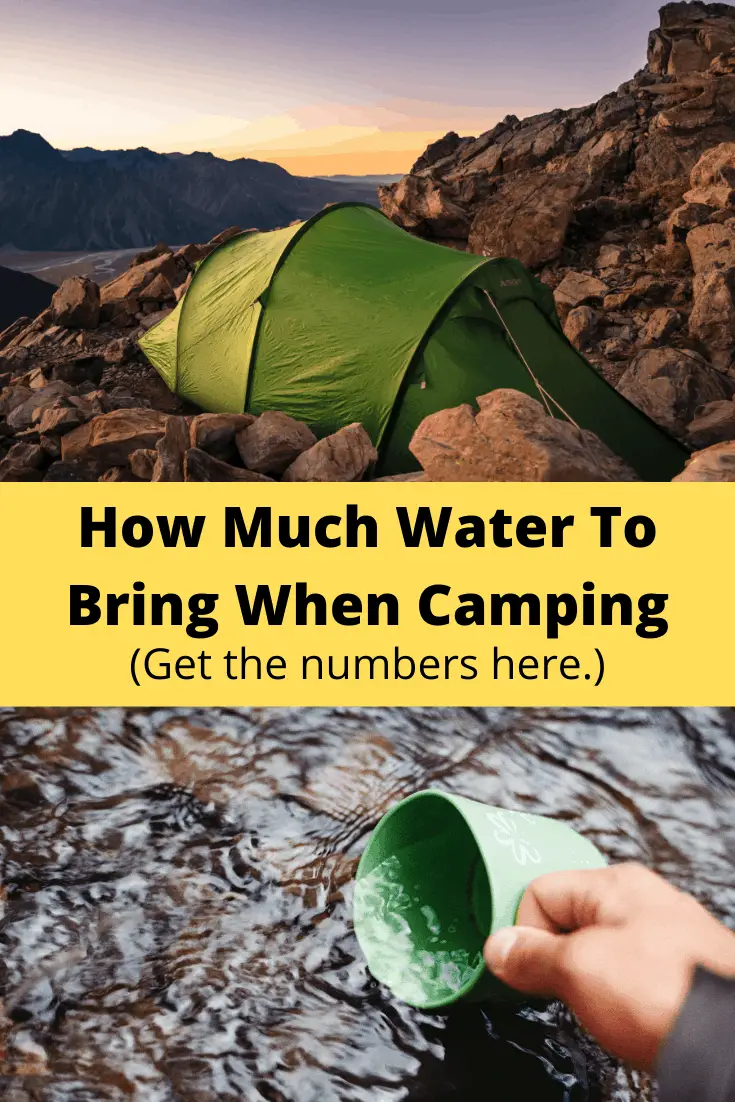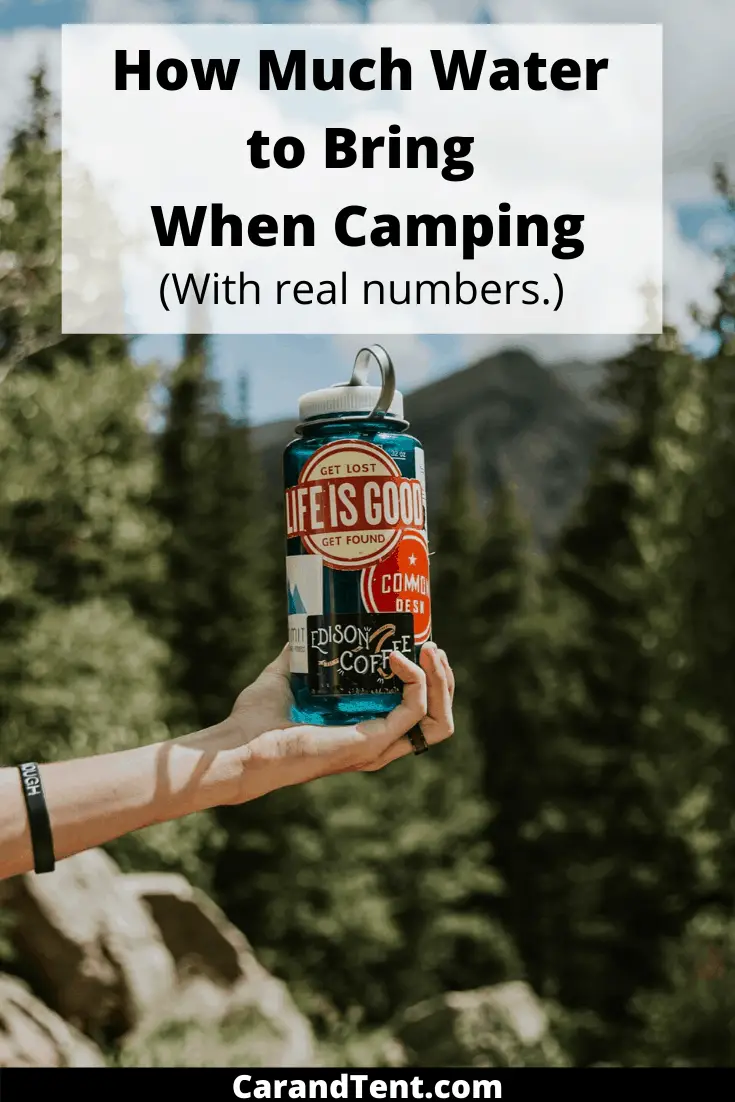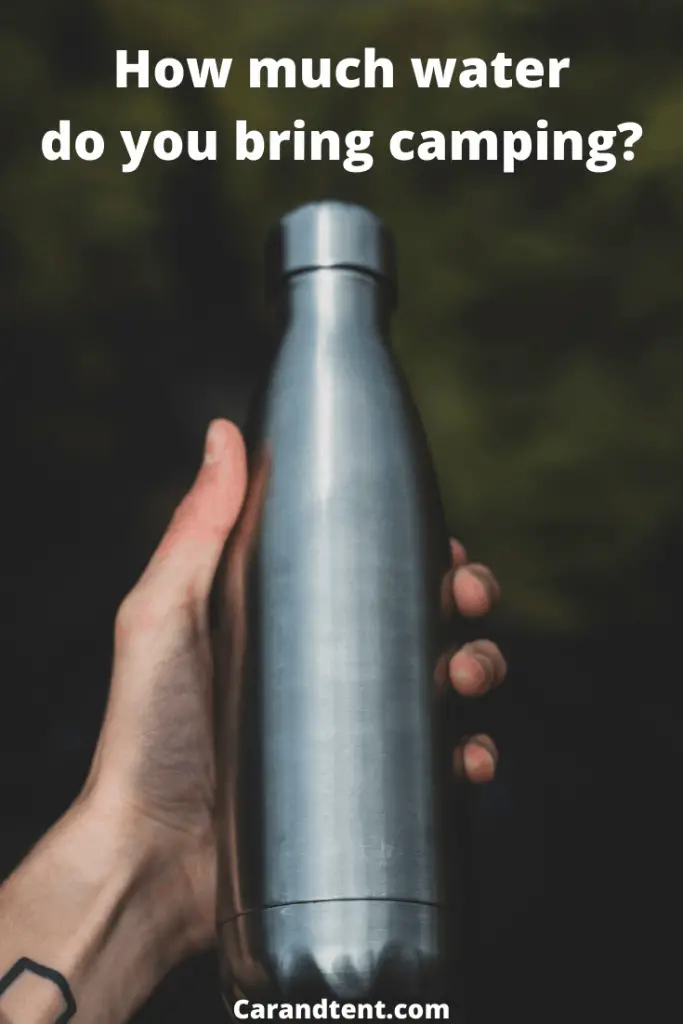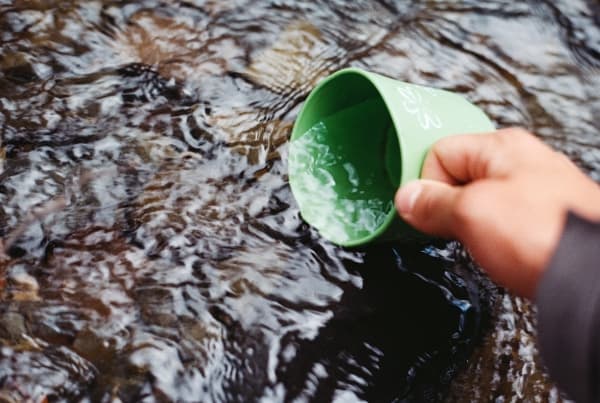
We all know that we have to bring water when camping but how much is enough? When camping we need to think about more than just the water we’ll be drinking. We need water for drinking, for cooking, for cleaning up, and for personal hygiene activities.
So how much water to bring when camping you ask? When car camping somewhere without water, you should plan to bring 2 gallons of water for each person per day. When wilderness camping you should plan on bringing a gallon of water per person per day.
These numbers include the water you’ll need for drinking, cooking, cleaning, and personal hygiene. When car camping you’ll have the added luxury of being able to devote more water to personal hygiene, cooking, and cleaning. While out on the trail, you may have to get a bit creative with your personal hygiene as you simply won’t be able to carry as much water with you.
This assumes that you won’t have access to any clean water supplies. If you’re able to get water on location then you’ll only need to bring enough water with you to get you by between supply runs.
Let’s take a further look at how everything breaks down so that you can see why we’re recommending you bring 2 gallons of water when car camping and 1 gallon of water when wilderness camping.
Table of Contents
Drinking-Water When Camping
Most experts agree that a healthy adult should drink about 64 ounces of water each day. You may need more if you’re sweating a lot and you may need less if you’re planning on being mostly sedentary.
For example, the person spending the day hiking out in the desert all day is going to need less water than the person reading a book by the river all day. If you’re on medicine or you’re larger than most people, you may need even more water.
Whenever possible, it is better to overpack than to under-pack.
Car campers can pack their drinking water in bottles or in jugs with spigots in them. Just be careful not to put all of your water into one jug when remote car camping as one hole can quickly drain you of all of your water. This is especially true when car camping out in the desert as even car campers can easily become stranded.
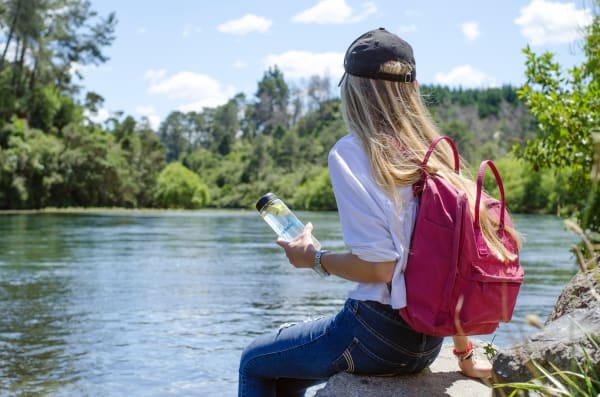
Backcountry campers have more planning to do as all of the water will need to be carried. Some hikers will use water bladders built into backpacks and others will use bottles or canteens. In most cases, the lighter the container, the better.
Again, it is better to have your water split up among more than one container. Many backpackers will make use of a water bladder, (like a camelback backpack), and a canteen or two. I’m a fan of plastic Nalgene water bottles as they’re sturdy and lightweight but many other companies make great water bottles for hiking and camping as well.
Cooking and Cleaning Water for Camping
I love drinking coffee. I drink at least two 12-ounce cups of coffee each day. Because of this, I need to pack an additional 24 ounces of water just for coffee. I have friends that don’t drink coffee but they love drink powders and thus need to pack water to mix with their powders. If you’ll be subsiding on water alone, you may not need the extra 24 ounces of water I’ve devoted to this.
Another 64 ounces of water is devoted to cooking and cleaning. This includes the water needed for cooking up dry food like oatmeal and pasta as well as the water needed to clean my pots and pans afterward.
For example, 1/4 cup of oats requires a full cup of water. That is another 8 ounces just for oatmeal.

When wilderness camping, the amount of water I bring for camping drops dramatically as I simply don’t have the ability to carry an extra 64 ounces of water with me when hiking. In this case, I’ll try to pack food that doesn’t require quite as much water to cook and I’ll find alternative methods for cleaning up my dishes.
Dehydrated food is great for hiking since it is lightweight and packs down small. The only issue with it is that it does require additional water. If you’re packing all of this water in with you then you have to decide whether the weight and space savings of dehydrated food is actually worth it.
Water Needed for Personal Hygiene While Camping
Car campers have the luxury of being able to fully wash up at the end of the day. For some campers, this might just mean a trip to the bathhouse which will have hot showers and sinks to use. In this case, you probably don’t have to worry much about water at all.
In other car camping locations, you’ll have to bring the water you need to clean up with you. I recommend at least 72 ounces for this.
8 ounces is devoted just to brushing my teeth and rinsing my mouth out.
64 ounces is devoted to washing my face as well as the areas of my body that I feel need to be cleaned each day. You’ll need even more if you decide to take use a portable shower while camping.
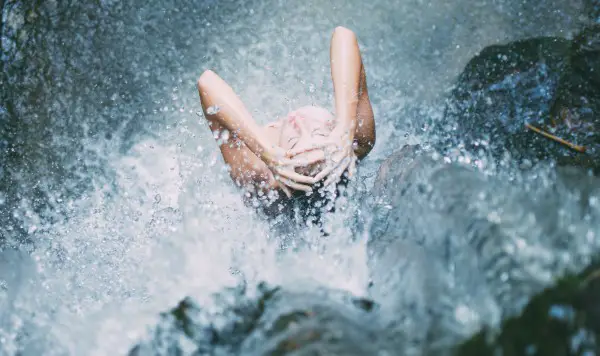
I don’t bother shaving when I’m camping but some people may want to pack a little bit of extra water for shaving. When I was in the Army I found that shaving in the field actually doesn’t require much water so you may be able to get by with the 72 ounces of water I recommended.
Some car campers will pack portable showers which generally require about 2 gallons of water to fill. If you plan on doing this, you’ll probably need 3 to 4 gallons of water for each day of camping.
Wilderness campers will have to get by with baby wipes, facial wipes and a small amount of water to be used for rinsing their mouths out after brushing.
Alternative Water Sources
In some cases, you simply won’t be able to pack enough water for your entire trip. For example, people doing thru-hikes on the Appalachian trail could never carry enough water to get them through the entire Summer.
Even car campers looking to head out for a couple of weeks may not be able to pack as much water as they’d like to use on their trip. This is especially true for people who want to take daily camp-showers. So what do these people do?
Car Camping Water Sources
The easiest way to get water when car camping is to choose a campsite in close proximity to a potable water source. Many state and national parks will have water sources close by. You’ll know because they’ll have the locations for water listed on the park map. In some cases, you may even be able to rent a campsite that has a water pipe run directly to the site.
Other car camping spots may not be close to clean drinking water but that doesn’t mean there isn’t water close by. For example, you may be near a stream, river, or lake that you can use to get water from. In this case, you’ll just need a high-quality water filter that is built for camping or other off-grid purposes. You can buy small water filters for as little as $30.00 or you can go with larger ones that cost several hundred dollars.
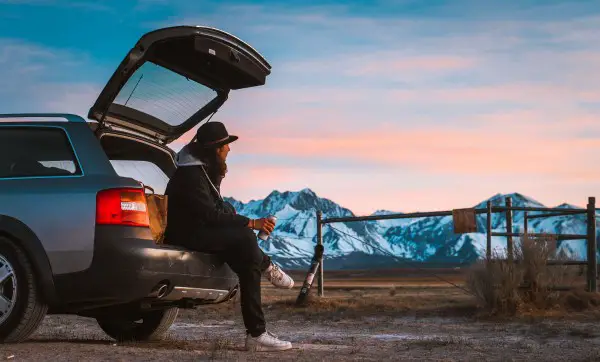
Some desert areas will not have any water sources in the area. If this is the case, you may need to plan on driving back to town from time to time. Whatever you do, don’t wait until you’ve run out of water before going to get more. Refill your water supply while you still have a day or two of water and you’ll be less likely to run out in an emergency.
Backcountry Camping Water Sources
Stationary backcountry campers can plan on using local water sources with water filters or can plan on hiking back from time to time to refill their water sources. When planning to use local water sources, always make sure that the water source is still there before planning to rely on it.
For example, some water sources along the Appalachian trail can run dry during the summer months. Imagine showing up thirsty to a dried-out water source.
Backpacking campers may want to plan ahead so that they can drop off the trail from time to time to restock their water supplies. Many trails overlap civilization so refilling water bladders and canteens might be as simple as hiking off the trail to a local convenience store or gas station.
Related Questions
How Much Water Do I Need for a Day Hike
A full day of hiking can require as much as half a gallon of water or more. This will vary depending on the difficulty of the hike as well as the weather you’ll be hiking in. A good rule of thumb is to plan on drinking 8 ounces of water for each hour of hiking. Just be sure you’re fully hydrated before venturing out so that you’re not trying to play “catch-up” while out on your day hike.
How Much Food Should I Bring Camping
From a health perspective, people tend to burn about 15 calories per pound of body weight. If you’re hiking and doing physical exercise you can easily burn 20 calories a day per pound of body weight. Bring enough food to meet your nutritional requirements and plan on eating enough calories to replace what you’ve burned each day.

